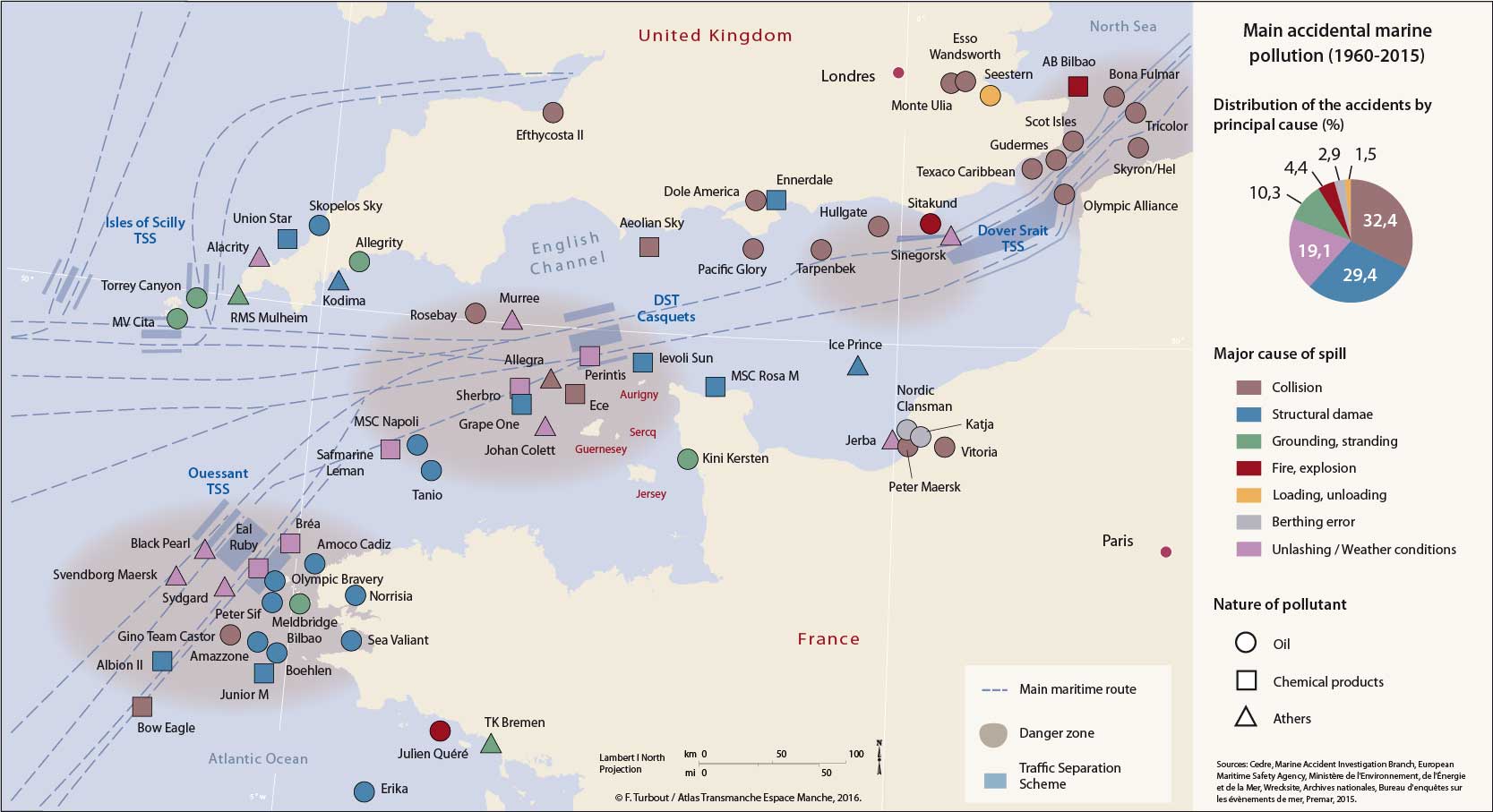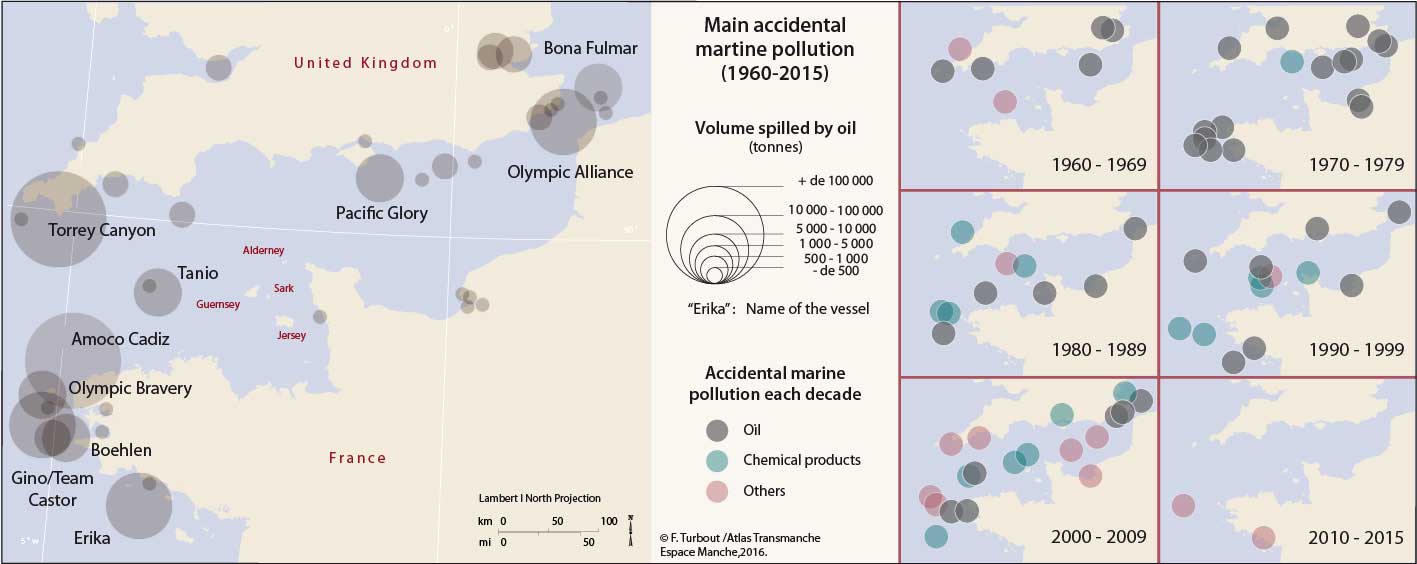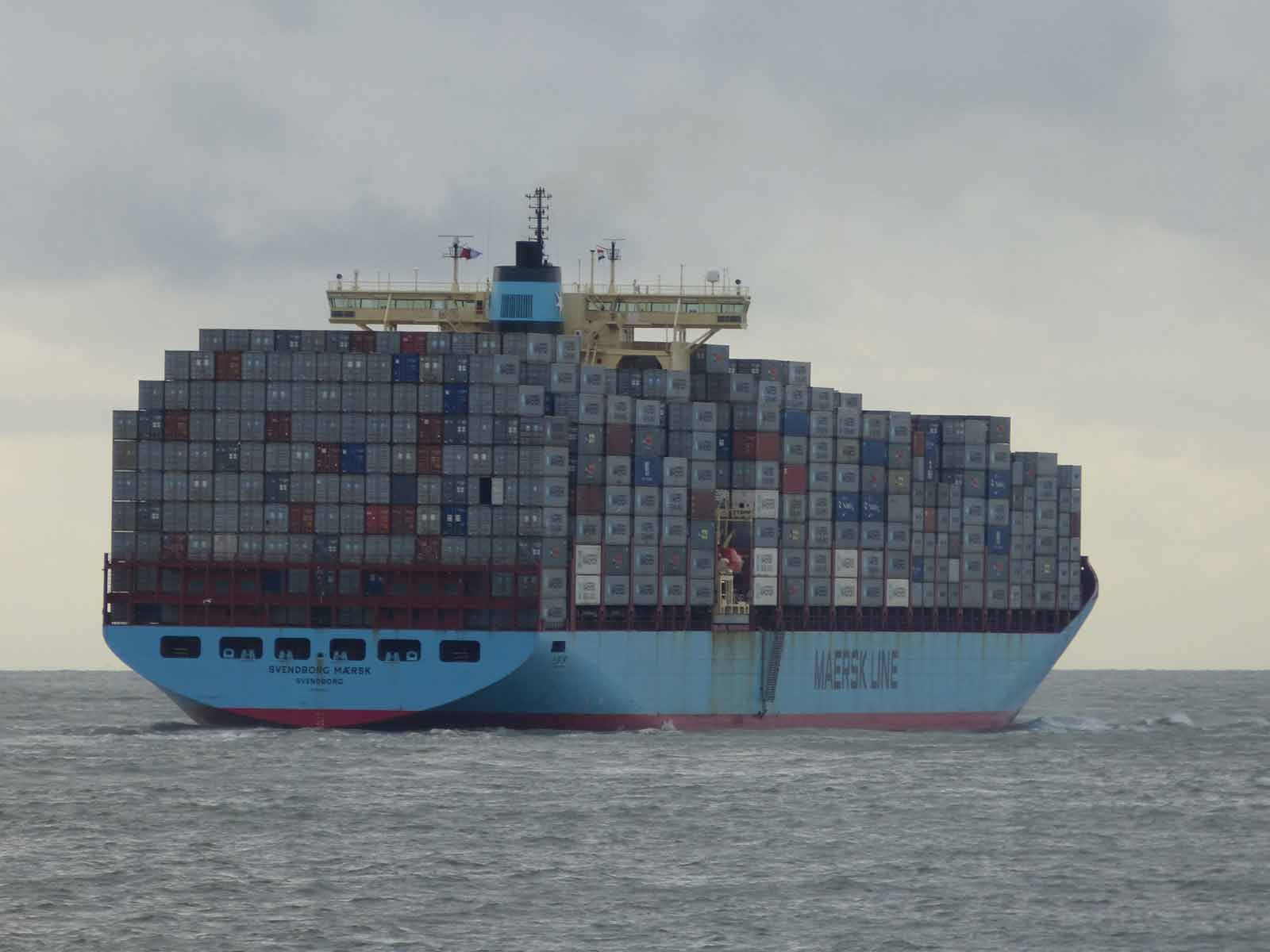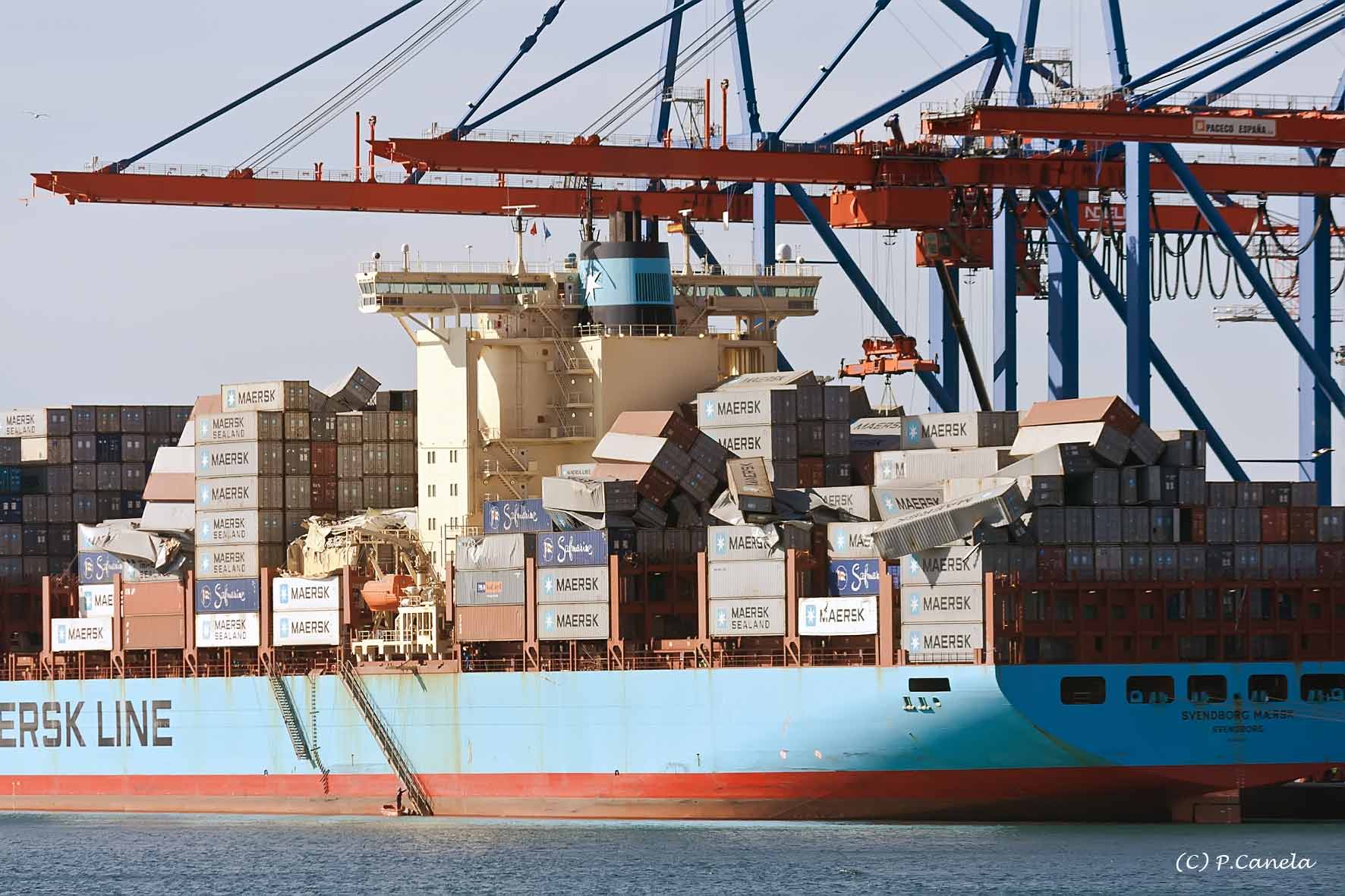

 Maritime Safety
Maritime Safety- Accidental marine pollution (1960-2015)
- Enjeu de sécurité (2016) FR
- Monitoring system
- Organization of maritime traffic
- Safety at stake (2007)
- Transport matières dangereuses (2008-2016) FR
The accidents with the most widespread consequences involve hydrocarbons; these have diminished only slightly since the wreck of the Torrey Canyon in 1967, which spread scenes of desolation along the coasts. It was not that pollution had not existed previously, but that event marked the combined onset of rising tanker size, growth in traffic, increased coastal settlement and awareness of environmental issues. More or less serious incidents followed, for example the Amoco Cadiz (1978) but they diminished in proportion to numbers of vessels, traffic having increased considerably. The Erika incident (1999) marked the beginning of increasingly powerful public and institutional reaction. Chemical tankers have also had their share of accidents (e.g. Ievoli Sun, 2000) although so far incidents involving them have been less serious. In 2007, the managed beaching of the MSC Napoli in Lyme Bay on the Dorset coast – a UNESCO World Heritage site – showed what could happen again. For the first time, in the winter of 2007, British and French authorities banned entry into the Strait of a container ship coming from the North Sea. Battered by a violent storm it constituted a danger.
Since 2008, no major spill incident involved hydrocarbons or chemical products. But the number of lost cargo (containers, timber) has risen sharply: lost, and floating just beneath the surface, they constitute a hazard.
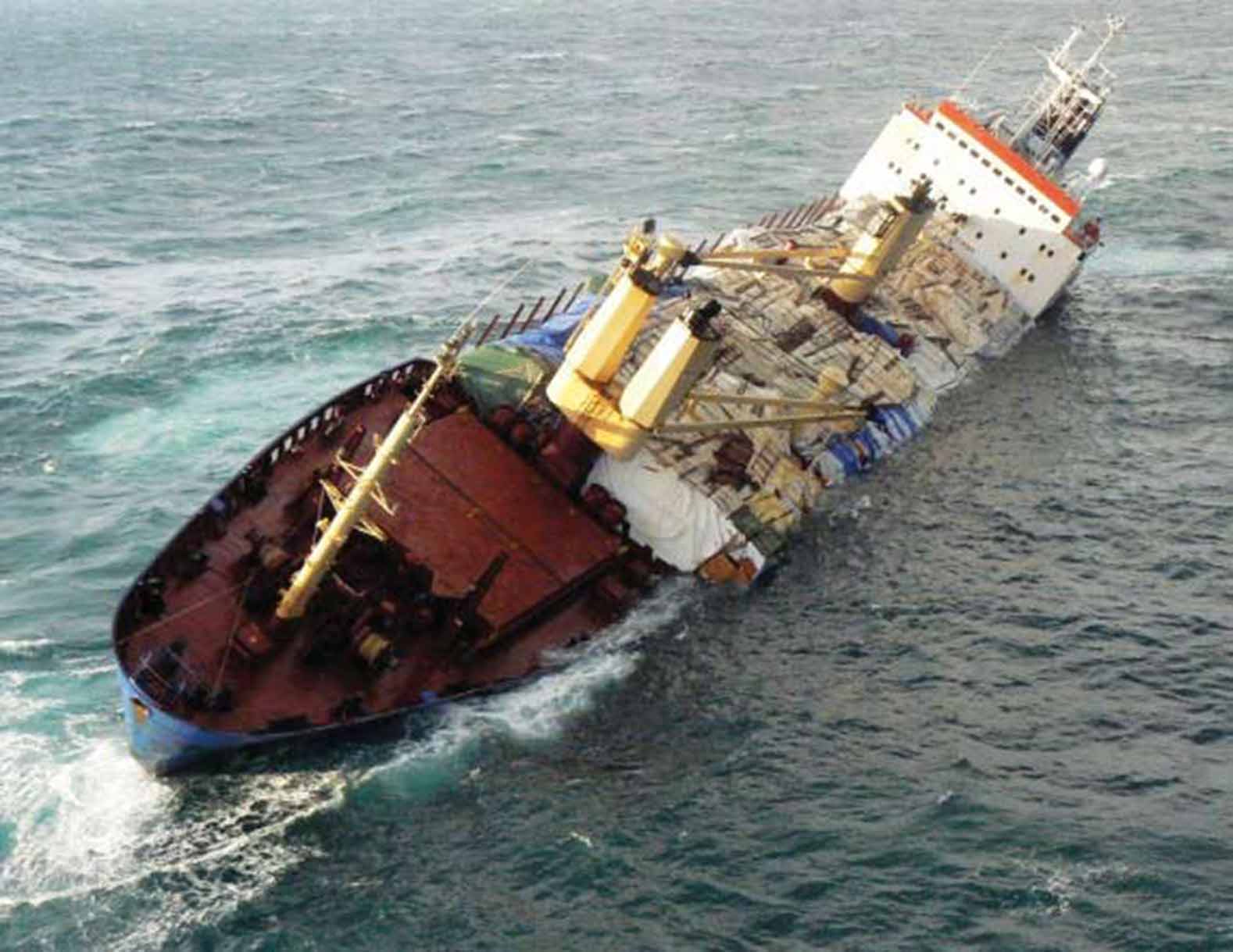
|
||
|
On 14 January 2008, the Greek bulk carrier Ice Prince suffered total power failure while in the Channel. Due to very rough sea and weather conditions, the vessel sank the following day, half-way between Cherbourg (Normandy) and Portland (England) in waters under British jurisdiction. 2,000 tonnes of timber stacked on deck fell overboard. The timber lost at sea eventually washed up on the shores of Sussex (England). |

|
|
|
Sinking of the Ice Prince on 14 January 2008
Source: EMSA 2008 - © Marine Nationale
|
Timber from the Ice Prince cargo ship, which sank off the Dorset coast,
is washed up on Worthing beach in West Sussex - © BBC News, 2008.
|
The English Channel is a particularly dangerous sea and one of the busiest in the world, is also one of the best monitored.
top












